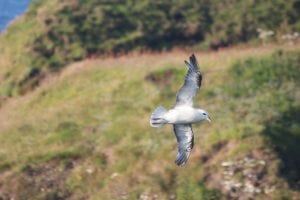Marine
New report published about bird and mammal displacement with wave and tidal energy devices
June 13, 2017 by Marine Scotland Communications No Comments | Category Collaborations, Marine Directorate general, Marine Directorate Science
 As the offshore marine renewables industry grows, understanding the way that marine species may respond to the installation and operation of wave and tidal energy devices is of particular importance. Recently, extensive research and effort has gone into furthering our understanding of potential implications of deploying these devices into Scottish waters. However, several questions still remain as to whether deployment of these devices is likely to have an impact on the distribution and abundance of marine wildlife in the vicinity of the devices.
As the offshore marine renewables industry grows, understanding the way that marine species may respond to the installation and operation of wave and tidal energy devices is of particular importance. Recently, extensive research and effort has gone into furthering our understanding of potential implications of deploying these devices into Scottish waters. However, several questions still remain as to whether deployment of these devices is likely to have an impact on the distribution and abundance of marine wildlife in the vicinity of the devices.
Since 2005, a wide range of wave and tidal energy devices have been tested by developers at the European Marine Energy Centre (EMEC) in Orkney. Running alongside device testing, has been the Wildlife Observation Programme which has collected detailed records on marine mammal and birds present at sea, in and around the test berths. The land-based observer data collected at EMEC has been extensive with over 11 years of data from the tidal energy site, Falls of Warness, and six years at the wave energy test site, Billia Croo.
To understand how these renewable energy technologies influence marine wildlife, Scottish Natural Heritage (SNH), Marine Scotland and EMEC commissioned a detailed investigation into how species distribution and numbers had varied across the test site, relative to different levels of site activity.
The study found little evidence of long-term effects on use of the surrounding seas by birds and marine mammals as a result of the installation and operation of wave and tidal devices at the test sites. The following provides a summary of the main findings:
- No significant changes in wildlife distribution were detected around the test berths at the wave energy test site at Billia Croo.
- Observations at the tidal test site, Falls of Warness, showed slightly reduced numbers in some species (e.g., great northern diver, cormorants, shags, various auk species, ducks and geese) in the vicinity of the test berths after construction work started. However, in all cases this returned to previous levels during subsequent deployment and operation of the turbines. It is therefore possible that increased vessel activity associated with installation is likely to be causing this change in distribution.
- For most other species, no such pattern of change around the Falls of Warness test berths could be discerned.
- The observations used in this study were made from land overlooking the test sites, so possible wildlife interactions with turbines below the sea surface, were not determined.
Further Information
- European Marine Energy Centre (EMEC)
- Scottish Natural Heritage (SNH)
- Marine Scotland renewables web pages
Tags: EMEC, Orkney, renewables, tidal


Leave a comment